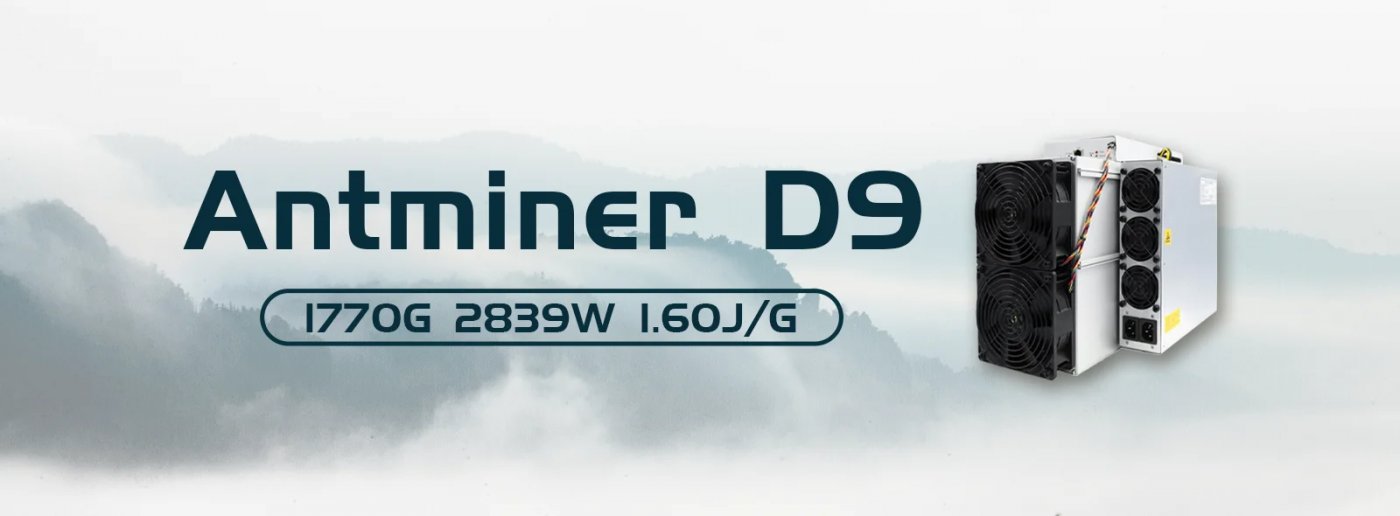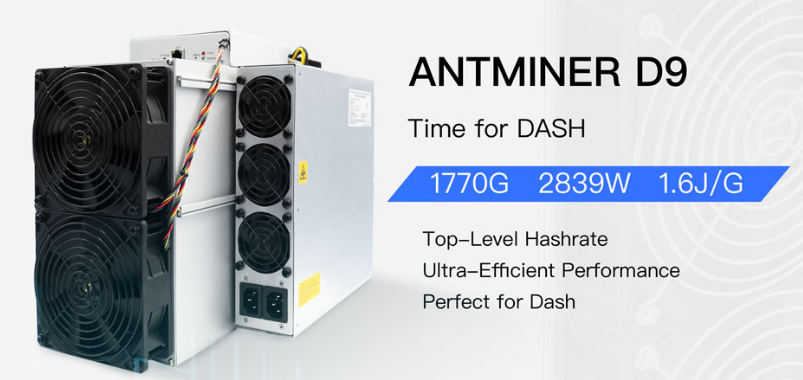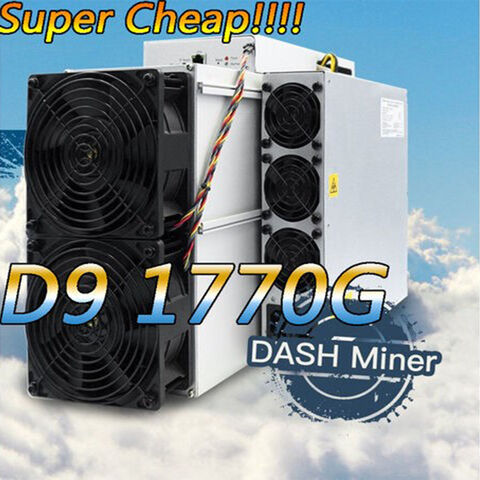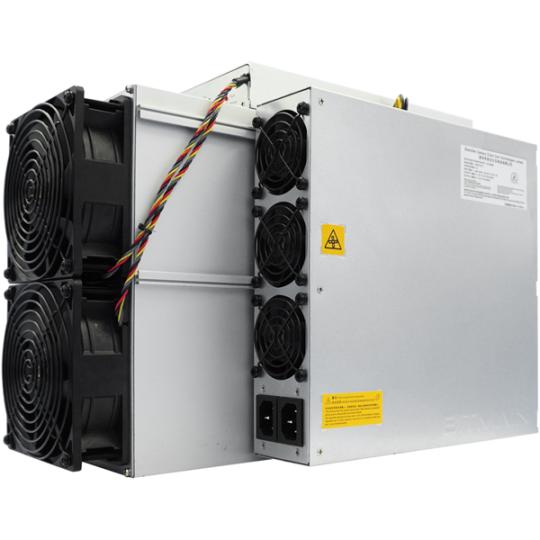How to Troubleshoot Dash Miner D9 Mining Issues?
Cryptocurrency mining is a complex and dynamic process that requires precision, efficiency, and reliable equipment. The Dash Miner D9, a flagship mining device from the renowned Antminer brand, is designed to deliver exceptional performance for mining Dash using the X11 algorithm. However, even the most advanced mining hardware can encounter issues that disrupt operations. In this article, we’ll explore common problems you might face with the Dash Miner D9 and provide practical troubleshooting steps to keep your mining operations running smoothly.
Understanding the Dash Miner D9
Before diving into troubleshooting, it’s essential to understand the core features of the Dash Miner D9. This miner is built for efficiency and reliability, boasting a hashrate of 1770 GH/s and an impressive power efficiency of 1.60 J/GH. Its compact design, advanced cooling system, and user-friendly interface make it a popular choice for both novice and experienced miners.
However, like any mining equipment, the Dash Miner D9 can encounter issues related to hardware, software, power supply, or environmental factors. Let’s break down the most common problems and their solutions.
Common Dash Miner D9 Issues and Troubleshooting Steps
1. Miner Fails to Power On
Possible Causes:

- Faulty power supply or incorrect power input.
- Damaged power cables or connectors.
- Internal hardware failure.
Troubleshooting Steps:

- Check Power Supply: Ensure the power supply unit (PSU) is compatible with the Dash Miner D9’s requirements (200-240V AC, 20A). Use a multimeter to verify voltage output.
- Inspect Cables: Examine all power cables and connectors for damage or loose connections.
- Test with Another PSU: If possible, test the miner with a different PSU to rule out power supply issues.
- Contact Support: If the miner still fails to power on, it may indicate internal hardware failure. Reach out to Antminer support or your supplier for assistance.
2. Low Hashrate or Reduced Performance
Possible Causes:

- Overheating due to inadequate cooling or ventilation.
- Incorrect firmware or software settings.
- Hardware degradation or component failure.
Troubleshooting Steps:
- Monitor Temperature: Ensure the miner’s operating temperature stays within the recommended range (0°C to 40°C). Clean the fans and ensure proper airflow in the mining environment.
- Update Firmware: Check for firmware updates from Antminer and install the latest version to optimize performance.
- Inspect Hash Boards: Use the miner’s interface to check the status of each hash board. If one or more boards are underperforming, they may need repair or replacement.
- Re-seat Components: Power off the miner and re-seat all internal components, including hash boards and connectors.
3. Frequent Reboots or Instability
Possible Causes:
- Power fluctuations or insufficient power supply.
- Overheating or thermal throttling.
- Firmware or configuration issues.
Troubleshooting Steps:
- Stabilize Power Supply: Ensure the miner is connected to a stable power source with consistent voltage and current.
- Improve Cooling: Check the cooling system, clean the fans, and ensure the mining environment is well-ventilated.
- Reset Configuration: Restore the miner to its default settings and reconfigure it based on your mining pool requirements.
- Update Firmware: Install the latest firmware to resolve any bugs or instability issues.
4. Noise or Vibrations from the Miner
Possible Causes:
- Loose or damaged fans.
- Dust accumulation in the cooling system.
- Misaligned internal components.
Troubleshooting Steps:
- Inspect Fans: Check the fans for debris or damage. Tighten or replace them if necessary.
- Clean the Miner: Use compressed air to remove dust from the cooling system and internal components.
- Check Alignment: Ensure all internal components are securely mounted and properly aligned.
5. Connection Issues with Mining Pool
Possible Causes:
- Network connectivity problems.
- Incorrect mining pool settings.
- Firewall or router restrictions.
Troubleshooting Steps:
- Test Network Connection: Ensure the miner is connected to the internet via the RJ45 Ethernet port. Test the connection using another device if necessary.
- Verify Pool Settings: Double-check the mining pool URL, username, and password in the miner’s configuration.
- Adjust Firewall Settings: Configure your router or firewall to allow traffic from the miner to the mining pool.
Pro Tips for Preventing Issues
- Regular Maintenance: Clean the miner and inspect components every 2-3 months to prevent dust buildup and identify potential issues early.
- Optimal Environment: Keep the miner in a cool, dry, and well-ventilated area to avoid overheating and humidity-related damage.
- Monitor Performance: Use Antminer’s monitoring tools to track hashrate, temperature, and power consumption in real time.
- Stay Updated: Regularly check for firmware updates and mining pool announcements to ensure compatibility and optimal performance.
Leveraging the Dash Miner D9’s Advantages
The Dash Miner D9 is designed to maximize your mining efficiency and profitability. Here’s how its unique features can help you overcome challenges:
- Efficient Cooling System: The advanced cooling design minimizes overheating, ensuring consistent performance even in demanding conditions.
- User-Friendly Interface: The intuitive interface simplifies monitoring and configuration, reducing the risk of errors.
- Global Support: With a 180-day warranty and dedicated support from Antminer and Minerfixes, you can quickly resolve issues and minimize downtime.
Conclusion
The Dash Miner D9 is a powerful and reliable tool for mining Dash, but like any sophisticated equipment, it requires proper care and troubleshooting to maintain peak performance. By understanding common issues and following the steps outlined above, you can ensure your mining operations remain efficient and profitable.

Remember, prevention is key. Regular maintenance, optimal environmental conditions, and staying updated with the latest firmware will help you avoid most problems. If you encounter persistent issues, don’t hesitate to leverage Antminer’s comprehensive support network. With the right approach, your Dash Miner D9 will continue to be a cornerstone of your cryptocurrency mining success.